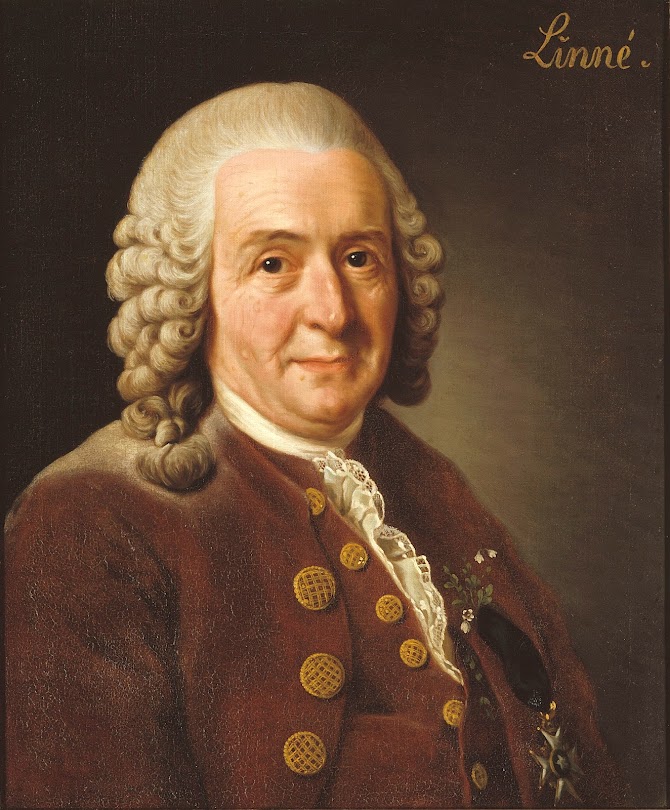In historical writing and analysis, PRESENTISM introduces present-day ideas and perspectives into depictions or interpretations of the past. Presentism is a form of cultural bias that creates a distorted understanding of the subject matter. Reading modern notions of morality into the past is committing the error of presentism. Historical accounts are written by people and can be slanted, so I try my hardest to present fact-based and well-researched articles.
Facts don't require one's approval or acceptance.
I present [PG-13] articles without regard to race, color, political party, or religious beliefs, including Atheism, national origin, citizenship status, gender, LGBTQ+ status, disability, military status, or educational level. What I present are facts — NOT Alternative Facts — about the subject. You won't find articles or readers' comments that spread rumors, lies, hateful statements, and people instigating arguments or fights.
FOR HISTORICAL CLARITY
Among the many adventurers who accompanied René-Robert Cavelier, Sieur de La Salle (Sieur de La Salle is a title only: translating to "Lord of the Manor.") to America and took part in exploring the wilds of the West, was an Italian of noble birth by the name of Henri de Tonti. Some years before, young Tonti, with his father's family, was banished from Italy because they had taken part in a revolution in that country and found a home in Rouen, France. Tonti, having a military education, joined the French army and served five years, a part of the time, as a captain in the National Guards. At the close of the war, he was discharged from service, came to America, and joined La Salle in his enterprise. La Salle made Tonti his lieutenant, or second in command, and the sequel shows that he was worthy of the trust placed in him.
Tonti's right hand having been shot off in the Sicilian war, its place was supplied with an iron one, which he kept always covered with a glove.
With this iron hand, Tonti, on different occasions, broke the heads or knocked out the teeth of disorderly Indians, which caused them to believe that he possessed supernatural power.
Tonti brought with him from France a large sum of money, which he used in common with La Salle in exploring and taking possession of the West, as well as in trade with the Indians.
The late Dr. Sparks says history never can do ample justice to Tonti. His life was one of patriotism and self-sacrifice, and the discovery and taking possession of the great West belonged mainly to him.
It was in January of 1680 that La Salle and Tonti built Fort de Crévecoeur (which was also known variously as Fort Saint Louis II, Fort Saint Louis du Pimiteoui, Fort Pimiteoui, and Old Fort Peoria. Pimiteoui, was the name of what is today's Peoria Lake), on the east bank of the Illinois River, near modern-day Peoria. The fort was completed in March of 1680.
La Salle left Tonti to hold Fort Crèvecoeur while La Salle returned to Ontario. Shortly after, Tonti joined a party to secure the Fort Saint Louis du Rocher fortifications at today's Starved Rock State Park in Utica, Illinois [1]. The remaining people at Fort Crèvecoeur pillaged the stores of supplies and supposedly fled back to Canada.
In the spring of 1682, Tonti journeyed with La Salle on his descent of the Mississippi River. Tonti's letters and journals are valuable sources of material for these explorations. Henri de Tonti returned to the fort to salvage what he could, moving what was left to Fort St. Louis.
When La Salle returned to France in 1683, he left Tonti behind to hold Fort Saint Louis on the Illinois River. He was to relinquish this control to Louis-Henri de Baugy under the orders of Frontenac. Three years later, he learned from remnants of La Salle's ill-fated Texas settlement that La Salle was attempting to ascend the Mississippi River. Tonti proceeded south on his own to meet La Salle on his ascent. He failed to find La Salle and made it to the Gulf of Mexico before turning back. He left several men near the mouth of the Arkansas River to establish a trading post there on land granted to him by La Salle for his service. This location would become the historical Arkansas Post, the first permanent European settlement in the lower Mississippi region.
During 1687, Tonti was engaged in wars with the English and their Iroquois allies. In 1688, he returned to Fort Saint Louis and found members of La Salle's party who concealed La Salle's death. Tonti sent out parties to find survivors and then started out himself in October 1689.
Tonti returned to the site to build a new settlement called Pimiteoui in 1691. The settlement would become what we know today as Peoria. This is also the basis of Peoria's claim for being Illinois' oldest city.
Forty years of Tonti's life were spent in the wilds of the West, enduring hardships, dangers, and deprivations, associating with savages, and without the benefits and comforts of civilization. His fortune sacrificed health and manhood destroyed became a wanderer along the Gulf of Mexico, but at last, returned to die at Fort Saint Louis du Rocher, and his bones now rest on the bank of the Illinois River at the west end of Starved Rock. He died of yellow fever in 1704.
In one of the Louvre picture galleries in Paris, a full-length portrait of a youthful-looking man dressed in French uniform, with epaulets on his shoulders and an eagle on his breast, can be seen. His left-hand holds a sword, while the left presents a singular appearance, as though deformed, but is hidden by a glove. This tall, graceful figure and piercing black eyes never fail to attract (the attention of strangers and inquiry would naturally arise for the history of the person here represented. Below this portrait is painted in large letters with the name "Henri de Tonti, la voyageur des Amerique."
Compiled by Dr. Neil Gale, Ph.D.
[1] Starved Rock State Park is rich with the footprints of Henri de Tonti. Tonti Canyon is narrow, with two 80-foot waterfalls. There is a back canyon with three more waterfalls that only flow with snowmelt or rain runoff. It's a beautiful place. Tonti Canyon connects to La Salle Canyon, which boasts the largest water flow in cascades and waterfalls.
When I write about the INDIGENOUS PEOPLE, I follow this historical terminology:
- The use of old commonly used terms, disrespectful today, i.e., REDMAN or REDMEN, SAVAGES, and HALF-BREED are explained in this article.
Writing about AFRICAN-AMERICAN history, I follow these race terms:
- "NEGRO" was the term used until the mid-1960s.
- "BLACK" started being used in the mid-1960s.
- "AFRICAN-AMERICAN" [Afro-American] began usage in the late 1980s.
— PLEASE PRACTICE HISTORICISM —
THE INTERPRETATION OF THE PAST IN ITS OWN CONTEXT.
 |
| Henri de Tonti |
Tonti's right hand having been shot off in the Sicilian war, its place was supplied with an iron one, which he kept always covered with a glove.
With this iron hand, Tonti, on different occasions, broke the heads or knocked out the teeth of disorderly Indians, which caused them to believe that he possessed supernatural power.
Tonti brought with him from France a large sum of money, which he used in common with La Salle in exploring and taking possession of the West, as well as in trade with the Indians.
The late Dr. Sparks says history never can do ample justice to Tonti. His life was one of patriotism and self-sacrifice, and the discovery and taking possession of the great West belonged mainly to him.
It was in January of 1680 that La Salle and Tonti built Fort de Crévecoeur (which was also known variously as Fort Saint Louis II, Fort Saint Louis du Pimiteoui, Fort Pimiteoui, and Old Fort Peoria. Pimiteoui, was the name of what is today's Peoria Lake), on the east bank of the Illinois River, near modern-day Peoria. The fort was completed in March of 1680.
La Salle left Tonti to hold Fort Crèvecoeur while La Salle returned to Ontario. Shortly after, Tonti joined a party to secure the Fort Saint Louis du Rocher fortifications at today's Starved Rock State Park in Utica, Illinois [1]. The remaining people at Fort Crèvecoeur pillaged the stores of supplies and supposedly fled back to Canada.
In the spring of 1682, Tonti journeyed with La Salle on his descent of the Mississippi River. Tonti's letters and journals are valuable sources of material for these explorations. Henri de Tonti returned to the fort to salvage what he could, moving what was left to Fort St. Louis.
When La Salle returned to France in 1683, he left Tonti behind to hold Fort Saint Louis on the Illinois River. He was to relinquish this control to Louis-Henri de Baugy under the orders of Frontenac. Three years later, he learned from remnants of La Salle's ill-fated Texas settlement that La Salle was attempting to ascend the Mississippi River. Tonti proceeded south on his own to meet La Salle on his ascent. He failed to find La Salle and made it to the Gulf of Mexico before turning back. He left several men near the mouth of the Arkansas River to establish a trading post there on land granted to him by La Salle for his service. This location would become the historical Arkansas Post, the first permanent European settlement in the lower Mississippi region.
During 1687, Tonti was engaged in wars with the English and their Iroquois allies. In 1688, he returned to Fort Saint Louis and found members of La Salle's party who concealed La Salle's death. Tonti sent out parties to find survivors and then started out himself in October 1689.
Tonti returned to the site to build a new settlement called Pimiteoui in 1691. The settlement would become what we know today as Peoria. This is also the basis of Peoria's claim for being Illinois' oldest city.
Forty years of Tonti's life were spent in the wilds of the West, enduring hardships, dangers, and deprivations, associating with savages, and without the benefits and comforts of civilization. His fortune sacrificed health and manhood destroyed became a wanderer along the Gulf of Mexico, but at last, returned to die at Fort Saint Louis du Rocher, and his bones now rest on the bank of the Illinois River at the west end of Starved Rock. He died of yellow fever in 1704.
In one of the Louvre picture galleries in Paris, a full-length portrait of a youthful-looking man dressed in French uniform, with epaulets on his shoulders and an eagle on his breast, can be seen. His left-hand holds a sword, while the left presents a singular appearance, as though deformed, but is hidden by a glove. This tall, graceful figure and piercing black eyes never fail to attract (the attention of strangers and inquiry would naturally arise for the history of the person here represented. Below this portrait is painted in large letters with the name "Henri de Tonti, la voyageur des Amerique."
Compiled by Dr. Neil Gale, Ph.D.
[1] Starved Rock State Park is rich with the footprints of Henri de Tonti. Tonti Canyon is narrow, with two 80-foot waterfalls. There is a back canyon with three more waterfalls that only flow with snowmelt or rain runoff. It's a beautiful place. Tonti Canyon connects to La Salle Canyon, which boasts the largest water flow in cascades and waterfalls.
 |
| Tonti Canyon, Starved Rock State Park, Illinois |
 |
| La Salle Canyon, Starved Rock State Park, Illinois |
















































